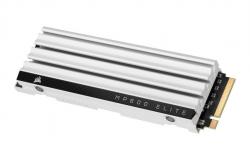
The large-scale retail trade evolves and so does its market and the choices of consumers who, in difficult times for purchasing power, not surprisingly, faced with rising prices and falling consumption, choose Private Labels with discounters who they perform better than traditional large-scale distribution. The Mediobanca Research Area presented the new edition of the Observatory on Italian and international large-scale retail trade with a prevalence of food, which aggregates the economic and financial data of 129 national companies and 32 major international players for the period 2019-2022.
In 2023, the general increase in prices pushed the nominal sales of Italian large-scale retail trade (+8.3% compared to 2022), with a negative impact on volumes (-1.7%). While in 2022 distributors absorbed part of the inflation of suppliers (+11% annual increase in producer prices in the food and beverage industry on the domestic market), transferring an average inflation level of 6.3% to retail prices % (average annual change in consumer prices of food products, non-alcoholic and alcoholic drinks), in 2023 the gap was reduced and the average annual change in consumer prices exceeded that of producer prices (+8.2% vs + 6.3%). The focus on saving has decreased brand and store loyalty and consumers have rewarded private label (MDD) products which they recognize as convenient but also quality and reliability. In 2023, private label sales, including the discount channel, reached 25.4 billion euros (+7.2% annual average from 2019), equal to almost a third of the entire market, getting ever closer to the European average ( 38% market share).
In 2022, the aggregate of the major Italian large-scale retail groups, mainly food, achieved a net turnover of 106.2 billion euros (excluding VAT), of which 16.4 billion pertaining to foreign-controlled operators (15.4% of the total). Between 2019 and 2022, sales increased by 20.4% with an average annual rate of 6.4%. However, the EBIT margin in 2022 fell to 1.9% from 2.2% in 2021, after peaking in 2020 (2.6%). Different level between retailers (2.4% average ebit margin 2019-2022) and wholesalers (1.6%). In 2022, retailers benefited from the “Energy product business bonus” which, only for the companies that received compensation, safeguarded on average 0.29 percentage points of the 2022 ebit margin (12.8% of its consistency). More incisive contributions for traditional large-scale retail trade (18.8% of their impact on Mon) compared to discounters (3.7%). Foreign-controlled operators are less performing: between 2019 and 2022 turnover growth of +4.5% on average per year (+6.7% for Italian operators) with 2022 ebit margin at 1.2% (2.1% for national operators) and ROI at 4.1% (5% for Italian retailers). Southern retailers stand out in terms of sales (+9.2% annual average over 2019), +5.4% for companies in Central Italy while operators in the North-East are more dynamic than those in the North-West (+6.1% vs +4.7%).
Aldi achieved the highest turnover growth between 2019 and 2022: +33.2% average per year, followed by Radenza Group (+15.4%), In’s Mercato (+14.6%), Tatò Paride (+13.4%), Apulia Distribuzione (+10.5%) and MD (+10.3% ). In the last year always Aldi (+29.8% on 2021), followed by Apulia Distribuzione (+25.5%), Radenza Group (+17.1%) and In’s Mercato (+16.1%). Higher 2022 Ebit margins for discounters Eurospin (6.3%) and its master franchisee Cive (6.9%); Ingross Levante is in third position (5.7%). The ranking for Roi sees on the podium: Radenza Group (33.1%), Tatò Paride (19.8%) and AZ (19.7%), Eurospin is close (19.1%). Eurospin claims to be the queen of cumulative profits between 2019 and 2022: 1,160 million euros, surpassing VéGé at 940 million and Selex (890 million). PAC 2000 A (Conad Group) is the largest Italian cooperative with sales in 2022 of 4,215 million euros, followed by Coop Alleanza 3.0 at 4,148 million and Conad Nord Ovest at 2,877 million which precedes Nova Coop at 2,701 million. The Coop system’s member loan marks a further decrease from 8 billion in 2019 to 7.7 billion in 2022. In the last four years the Coops have achieved net financial income of 456 million and suffered write-downs of 470 million.
The market share of discounters it went from 18.9% in 2019 to 23% in 2023. In Italy there are 94 discount stores per million inhabitants, fewer than in Poland (128), Germany (115) and Spain (101), but more than in France ( 49) and United Kingdom (27). The discounters double the traditional large-scale retail trade: in 2022 the turnover grew by +9.9% on average per year compared to 2019 (+5.5% for the other operators), +13.4% on 2021 (+7.9 for the traditional large-scale retail trade) . Marginality stands out: 2022 ebit margin of discounters at 4.3% vs 1.3% of traditional groups, ROI at 13.3% (3.6% for other operators) and investments in structural equipment explode (+26.1 % between 2019 and 2022; -15% other operators). In detail: Eurospin will be worth 31% of the segment in 2022 (it was 26.9% in 2011), followed by Lidl which went from 20.1% in 2011 to 22.3% in 2022 and MD from 5.4% to 15 ,6%. In five years Aldi has reached 2.7% of the discount market; D.Più (from 3.5% in 2011 to 3.9% in 2022) and Prix (from 0.8% to 2.3%) also advanced. However, the shares of Penny Market (from 8% to 5.9%), In’s (from 5.5% to 4.6%), Todis (from 4.7% to 4%), ARD (from 2.1% to 1.9%) and Ekom (from 2.2% to 1.6%) and the other smaller brands (from 20.7% in 2011 to 4.1% in 2022), making the more concentrated market.
Between 2019 and 2022 the market share of the seven Organized Distribution groups, with the exception of the two cooperatives Conad and Coop, grew by more than five percentage points. VéGé is the operator that has attracted the highest number of new members (six), two of which are already members of other structures (D.IT and C3). Agora emerges in 2022: the highest margin (EBIT margin 4.1% and ROI 10.2%) and sales that have grown since 2019 at an average annual rate of 9.6%. The average CAGR of +6.3% between 2019 and 2022 is also surpassed by Selex (+7%) which instead lags behind on margins (ebit margin 1.7% and ROI 5.1%). C3 and VéGé return a ratio between mons and turnover equal to 3.2% and 2.2% respectively, higher than the average one (2.1%), but present a different positioning in terms of ROI: higher than average of 6.5% for VéGé (7.7%), lower for C3 (6.1%) which shows the lowest average annual growth rate of turnover (+3.7%). Latest for Crai ebit margin (1.2%) and for Roi Despar (3.3%). There are twenty-five organized distribution companies with a turnover exceeding 500 million. The largest increase in turnover in 2022 was achieved by Metro Italia (+34.7% compared to 2021) which distances Syneos (Ergon) (+20.1%), the Tosano Cerea Supermarkets (+18.4%), Multicedi ( +16.7%) and Retail Evolution Holding (Iperal) (+15%). Arena Group has the best return on invested capital (ROI) index (17.8%), followed by Rossetto Group (17.7%) and six others with indices in double figures. Another 20 associates achieved a turnover of between 200 and 500 million euros in 2022. Among these, the greatest growth in turnover between 2021 and 2022 was recorded by Sidi Piccolo – Sistema Distributivo Innovativo (+21.4%), followed by 5 Erre (CDS) (+14.4%) and Supermercati Visotto ( +14%). The latter also emerge in 2022 in terms of ebit margin equal to 3.7% and 3.6% respectively, behind ISA – Industria Servizi Agroalimentari (4.5%) and L’Abbondanza (4.4% ) whose ROI stands at 12.6%, in third position after SISA Sicilia (20.8%) and Gambardella (19%).
In 2022, the major international retailers recorded a turnover ranging between 568 billion euros for the US WalMart and 20.8 billion for the British WM Morrison. The greatest international projection is of the Dutch Ahold Delhaize (80.1%), followed by Jeronimo Martins which sells mainly in Poland (77.6%), the Japanese Seven & i (75.3% mainly in North America) and the French Carrefour (53.7%), Casino (53%) and Elo #Auchan (47%). The international panel expresses an average ROI in 2022 of 9.1%, down compared to 10.3% in 2021. In terms of sales per square meter on its domestic market, Esselunga with 15,576 euros per square meter surpasses all the main international operators . At a distance are the British Tesco (12,527 euros), the Canadian Empire (11,862 euros), the Australian Woolworths (11,719 euros), the British J.Sainsbury (11,672 euros) followed by the other Australian Coles (11,603 euros) and the British Wm Morrison (11,099 euros).
Contacts: [email protected]
Follow us also on Twitter: @WineNewsIt
Follow us also on Facebook: @winenewsit
This article is taken from the WineNews archive – All rights reserved – Copyright © 2000/2024




